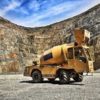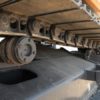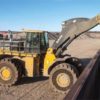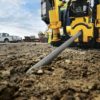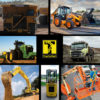Driverless equipment technology is drastically changing the face of mining

Disruptive improvements in driverless technology have enabled heavy-duty equipment manufacturers to produce autonomous drills, railways and trucks for the mining industry. Although there have been some speed bumps along the way, the autonomous mining devices are quickly being adopted as the way of the future by mining companies all over the world. Driverless haulage vehicles alone improve productivity by as much as 20 percent. All automated systems have the potential to decrease employee risk by removing individuals from hazardous areas. The following mining technology producers are swiftly changing mining into an almost fully automated industry.
Rio Tinto
Rio Tinto fully reimagined the mining process by creating or adopting autonomous technology for every phase of the process. This effort has been branded “The Mine of the Future” by the company, reflecting its total reinvention of equipment and operations in the mining field. Autonomous technology utilized on the various sites includes drilling systems, haulage trucks and a long distance railway.
The team initially set their sights on reducing the environmental and financial impact of mining equipment through the perfection of automation. Additional benefits are improved safety statistics and better working conditions for the equipment operators. These skilled individuals work in a central operations center in Perth to control and monitor multiple types of equipment at the same time.
ASI
After producing multiple vital safety systems for traditional mining equipment, ASI transferred their attention into designing hardware and software for autonomous vehicle systems. The newly designed programs transform traditional equipment, such as articulated dump trucks, rigid haul trucks, bulldozers, and excavators, into driverless devices.
The autonomous system upgrade, called NAV, has consistently proven itself as a drastic improvement in safety and productivity across the board. The device also monitors the health of the vehicle in real-time to reduce unexpected component wear or damage. Operators can control the equipment remotely or using teleoperation. ASI also integrates powerful AI software into the NAV system for mining professionals interested in switching to full automation of their mining procedures.
Sandvik
Sandvik currently focuses all of its attention on creating an integrated automated surface drilling system called AutoMine. The system is almost completely automated, with individuals supervising the mining actions from the control room. In addition to watching the actual action of the drilling equipment on a view screen, multiple real-time measurements come through to confirm data, such as positioning, used to accurately complete the task at hand.
If the equipment needs corrections, the supervisors can provide direction using the controls within the station or teleremote devices. Operators can also switch through the drilling equipment options, all the way up to large rotary rigs, to select the perfect tool for the job. In addition to improving safety for drill operators, the automated systems improve efficiency by reaching ore considered inaccessible by onsite teams.
CAT
CAT has teamed up with the Thunder Basin Coal Company to develop and test automated dozers and haulers. The joint venture allows CAT to steadily move toward its goal of developing a full fleet of automated equipment. In the initial phase, the autonomous systems were installed on D11T dozers used for the reclamation and overburden removal processes, which are notoriously risky for onsite operators.
With the continued success of those processes, the company turned its attention toward large mining trucks and LHDs, or front end loaders, for underground mining operations. All of the partial and fully automated systems are monitored and operated by a skilled team of professionals working in a remote control center. A single individual can oversee multiple pieces of equipment at a time using the provided real-time metrics and camera views.
The future of mining
With driverless technology expanding across every sector, autonomous mining equipment will only continue to improve in productivity while dropping in cost. Eventually, mining equipment industry-wide will be manned from within a control center or preprogrammed for each phase of the mining process. Due to the expense of the equipment, autonomous technology developers extensively test their systems to avoid rolling out a dangerously incomplete control mechanism or software program.
Across every industry, worries about automation revolve around skilled job elimination for all but the select few accepted for the control room positions. Although adoption of this technology has the potential to cause a downward trend of job availability, the safety improvements alone may make the switch well worth the initial growing pains. Keeping the operators far from potential hazards and pitfalls could transform the industry from one of the most dangerous for workers to the safest.
In an industry with ongoing labor shortages, however, a downward tick in skilled job demand may actually be accepted with open arms. With operators having the ability to control multiple vehicles from the control room, problems associated with recurring seasonal labor shortages could quickly disappear, resulting in steady productivity year round. Drivers interested in remaining in the industry can receive the training they need to move into the control room and remotely pilot the automated vehicles.

